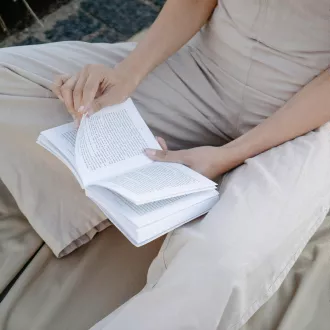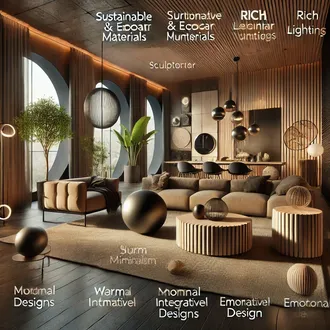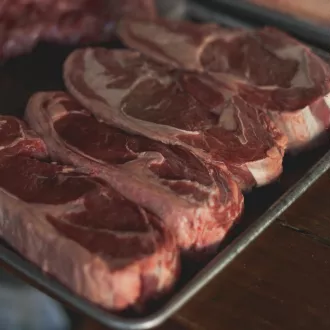Transcription Decoration with natural materials
Wicker, bamboo, clay, seashells and stones are some of the elements that make up the long list of natural materials that continue to capture the imagination of decorators in all regions of the planet.
The growing taste for appreciating natural elements in interior decoration is mainly motivated by the fact that people are more aware of the relationship between the consumption of natural products and the health of human beings and the planet. This vision has a solid scientific foundation, so the trend of surrounding ourselves with natural products will continue for a long time, so decorators should familiarize themselves with their characteristics and ways to combine them properly, to make spaces increasingly healthy and attractive.
Advantages of using natural materials in interior decoration:
- Natural objects endow spaces with tranquility, security and homey feeling.
- Most natural materials are warm, so they are ideal for creating cozy or intimate environments.
- They add a certain country, timeless, neutral and exclusive tone to spaces.
- They allow the recycling or reuse of certain materials, contributing considerably to the care of the planet.
- They are usually very economical, so they are within the reach of anyone.
Natural materials most used in interior decoration
Wood: It is a material that is used both alone and combined in the manufacture of many functional or decorative objects in the home. Depending on the finish and color of the carpentry, furniture and other wooden pieces of the room, they can recreate a rustic, natural or refined atmosphere and provide a feeling of greater or lesser environmental warmth.
Wood is a very valuable material for the manufacture of many kitchen utensils, small or medium-sized handicrafts and sculptural pieces and picture frames. Branches and wood trunks practically unprocessed are widely used in the manufacture of seats and tables, which combined with other rustic objects made of wicker, bamboo or rattan can set very natural, fresh and pure spaces.
Bamboo: Bamboo is characterized for being a very light, resistant and easy to work with material, which makes it possible to use it in the elaboration of a wide variety of objects, especially those with curved lines, such as lanterns and braided baskets. It is also used in the manufacture of curtains or blinds to protect interior spaces from the intense rays of the sun and in the manufacture of countertops and other objects for kitchens.
Wicker: It is a light, flexible, robust and inexpensive vegetable fiber that is woven to create furniture -especially for porches-, baskets and other useful or decorative objects. Wicker furniture is very comfortable, resistant and cool, ideal for summer. The sets of rocking chairs -seat with arms and curved base- and coffee table, made entirely of wicker, are ideal for resting, reading, or watching TV.
Rattan: Rattan is the name given to some six hundred species of tropical palm trees with very thin stems -from about 10 to 100 millimeters in diameter- that are peeled and chopped into strips to be used in the manufacture of baskets and furniture similar to wicker, with the difference that rattan is more robust, allowing the construction of more rigid furniture.
The larger diameter stems are used to form the structures of chairs, tables, rocking chairs, baskets, etc., while the thinner ones are heated and molded by intertwining them in various ways - without the need to cut them - to form the surfaces of the objects. For example: bed headb
natural materials




